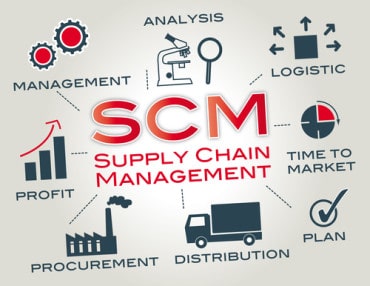
With LCNC platforms at their disposal, organizations can also look at bite-sized transformation, enabling even more near-term benefits. They can deploy DX and start delivering outcomes with faster time-to-market and ROI, as well as lower OpEx costs.
Digital transformation (DX), once considered an aspirational process, is now fully mainstream. However, often enough, DX tends to stretch into a long-drawn-out process, slowing down current operations and leading to an uptick in costs.
This is the context in which the global low-code no-code (LCNC) platform market, valued at approximately $22.5 billion USD in 2022, becomes relevant. Projected to reach $32 billion USD in 2024 at a CAGR of 26.1%, LCNC platforms are attracting attention because they can provide organizations with a tool that can give their DX programs a boost, leading to superior customer experiences and accelerated results.
What are the characteristics inherent in these platforms that enable these positive outcomes? Let us take a closer look.
Empowering quicker results
LCNC platforms give organizations a cost-effective and personalized way to embark on DX journeys without waiting for years to enjoy a return on investment. LCNC platforms can also selectively move legacy applications from an organization’s previous IT architecture and make them fit seamlessly with a company’s modern IT ecosystem.
This is because LCNC platforms enable a unique combination of capabilities: to build systems of engagement and systems of differentiation iteratively and with agility. Consider the example of a leading US-based insurance company that wanted to introduce new products or new product versions quickly due to the inherent limitations of its prevalent applications. When it decided to introduce an LCNC platform solution to help improve its IT architecture, the organization saw a 50% reduction in the time it took to configure and introduce new products. It could also configure multiple new products in parallel and simultaneously.
See also: How Low-code Helps Businesses Become More Agile
Focusing on process (not tech)
A closely related second characteristic that distinguishes these platforms is their ability to be focused on enabling robust processes. Deploying LCNC platforms allows enterprises to identify what they want a particular business process to be and then, by leveraging the tool’s flexibility, help deploy it without being restricted by a company’s existing enterprise technology.
Such capability is extremely relevant to businesses dealing with inefficient backorder processes. Take, for example, a large, US-based, global healthcare and life sciences company that was grappling with a huge backlog of backorders. Business users were managing backorder data through mainframes, and customers were being contacted individually over email. Further, the business had no unified view of data. Managing the mainframe user interface (UI) to calculate data was complex, and the company did not have one tool with which to correctly identify and expedite half-a-million backorders.
The firm decided to introduce and implement an LCNC platform solution. With it, the company acquired one rich UI portal that enabled the swift execution of backorders. Additionally, due to the availability of an API-ready platform, the company was able to help business users allocate inventory backorder data to different warehouses— methodically and efficiently— by using mainframe integration.
Enabling collaboration
Process-oriented LCNC platforms also encourage strong collaboration between an enterprise’s digital office and its business units. By empowering citizen developers, these platforms both simplify and accelerate application development while democratizing innovation. How exactly does this happen?
With citizen developers enabled to get more directly involved in developing applications best suited to meet specific business needs, all systems within an enterprise’s existing architecture get closer to the end customers. This enhances both access and acceptability. The shift also helps to create more business value as app development is now free of the prescriptions of legacy tech, leading to faster development and implementation of new applications. Greater collaboration also brings more efficiency to the whole software development cycle as IT and business move beyond their silos to deliver a solution together, in close coordination with each other.
Facilitating compatibility
Another unique LCNC platform capability is compatibility. These platforms or layers can slide in and fit with any of the existing legacy IT architectures from mainframes right up to Enterprise Resource Planning (ERP) systems. Companies that choose to deploy LCNCs gain from being able to add these new, iterative layers to their existing IT architecture landscape without having to spend time or resources in finding ways to make it fit.
Contrary to how systems of technology function, where the technology comes first and “the problem to solve” comes later, LCNC platforms are designed to pick up software challenges at hand and go from piece to piece, building iteratively. The platforms also have the capacity to micro-design and micro-assess the business impact of an application immediately, providing companies with a handy tool to determine the efficacy of a solution before introducing it enterprise-wide.
With LCNC platforms at their disposal, organizations can also look at bite-sized transformation, enabling even more near-term benefits. They can deploy DX and start delivering outcomes with faster time-to-market and ROI, as well as lower opex costs.
However, it is important to evaluate whether LCNC platforms are suited to an organization’s current stage of development and future business strategy. Force-fitting LCNC platforms into a business’s IT architecture without giving due thought to the prevalent work culture and enterprise readiness will not prove to be beneficial. Once a balanced view has been taken, LCNC platforms will undoubtedly enable companies to expedite their DX journeys.
The DX imperative is undeniable, yet challenges like slow progress and rising costs can hinder its success. Here’s where LCNC platforms step in, offering a powerful solution for businesses to achieve superior customer experiences and accelerated results. Further amplifying these benefits are Generative AI (GenAI) tools, enabling automated testing, advanced data analysis, and optimized application performance. This potent combination of LCNC and GenAI fuels a faster, smoother DX journey, propelling businesses forward. By embracing this agility and collaboration, organizations can leverage LCNC platforms to navigate a successful and sustainable DX journey, securing a competitive edge in today’s dynamic landscape.



























